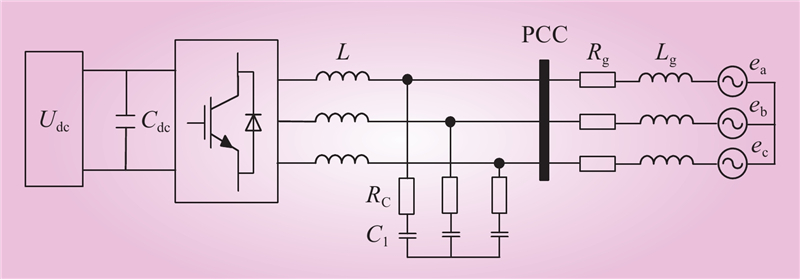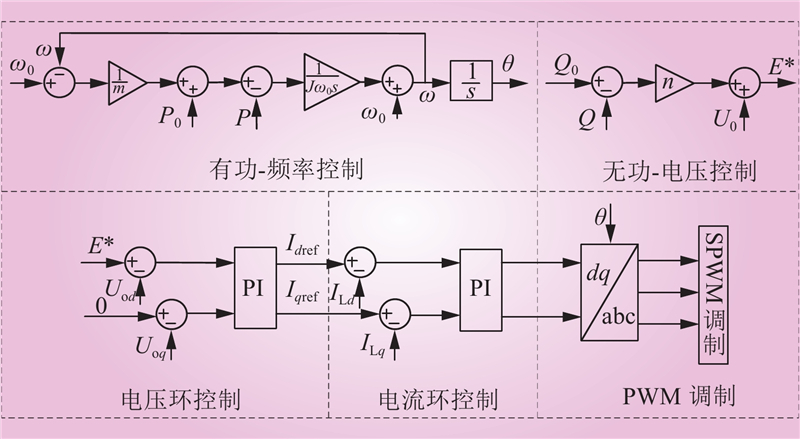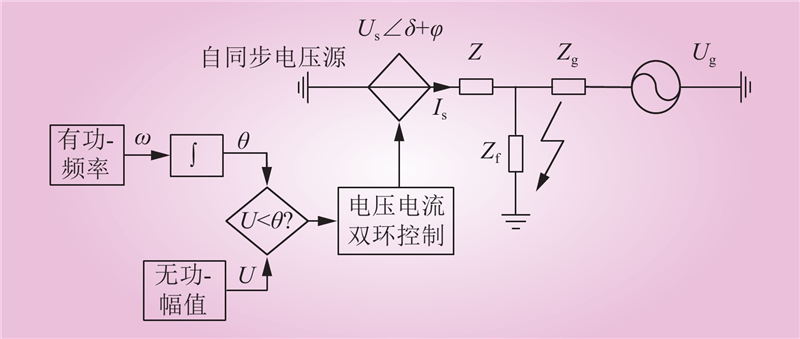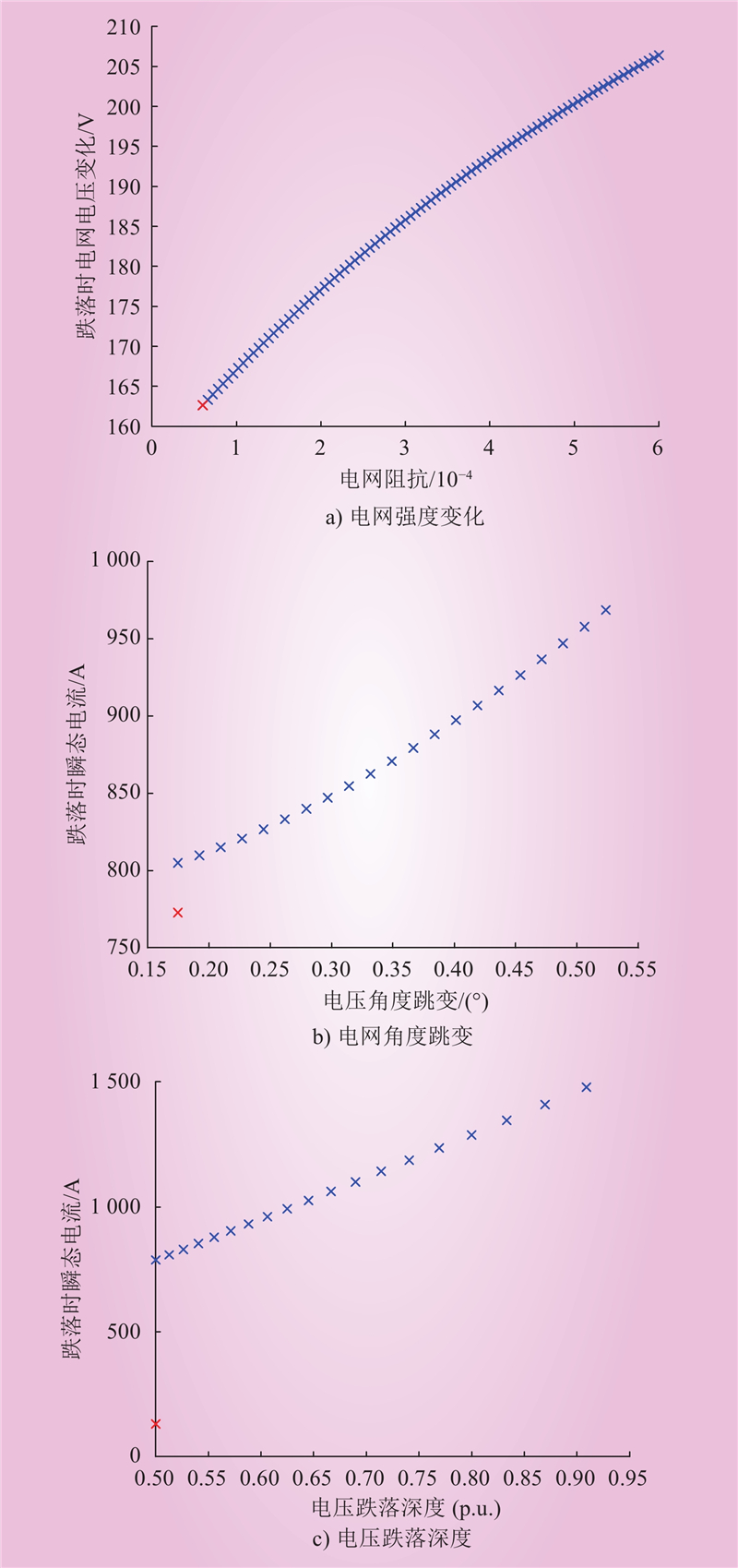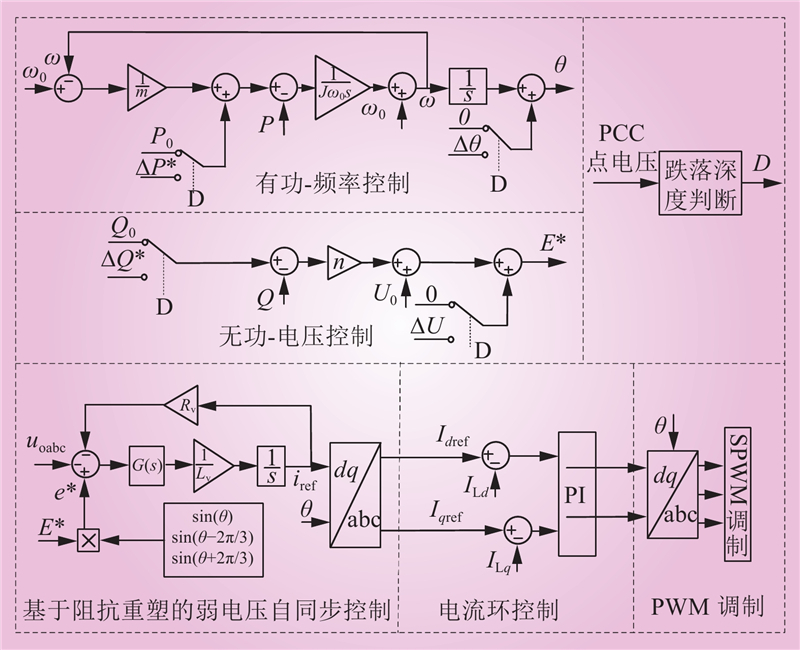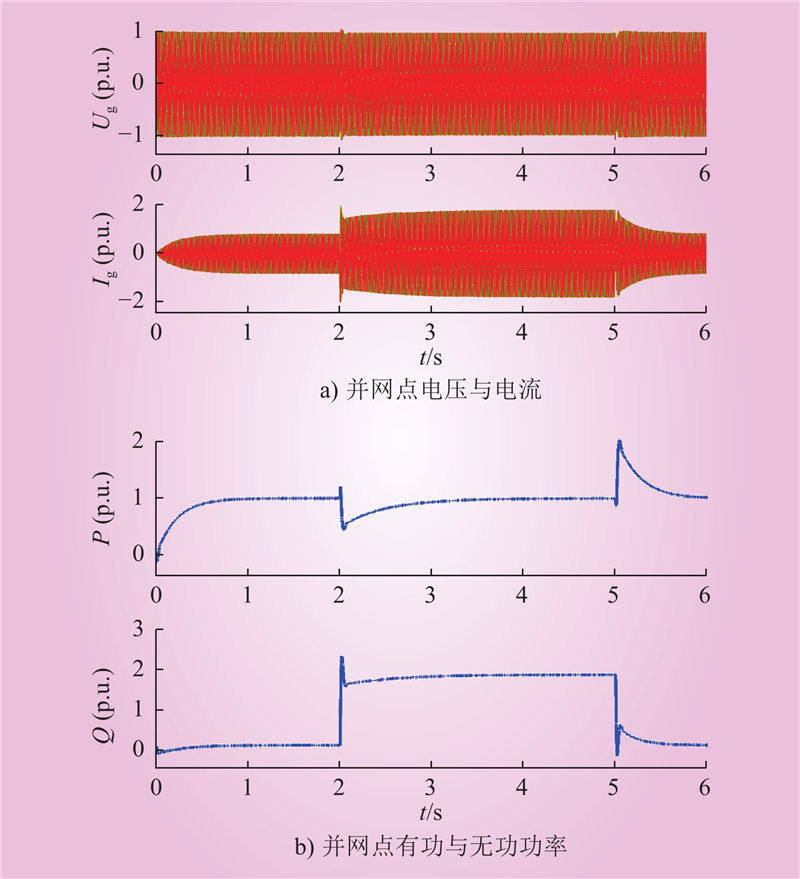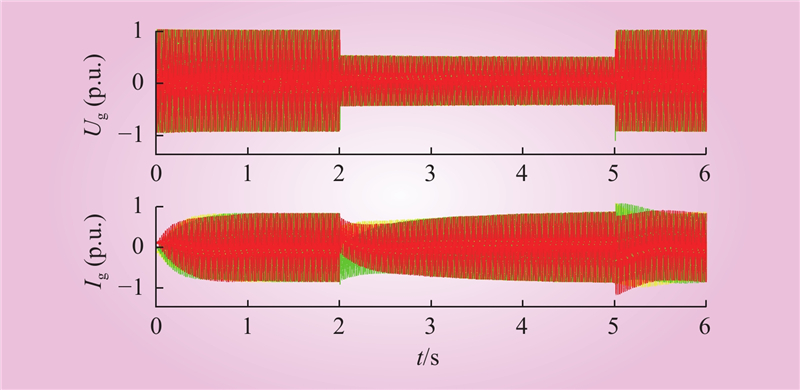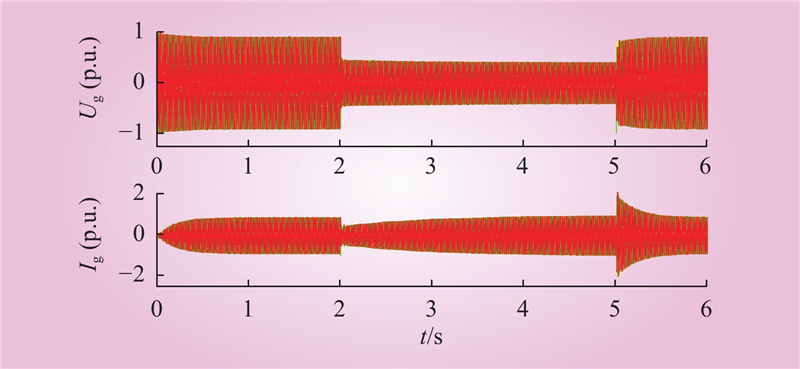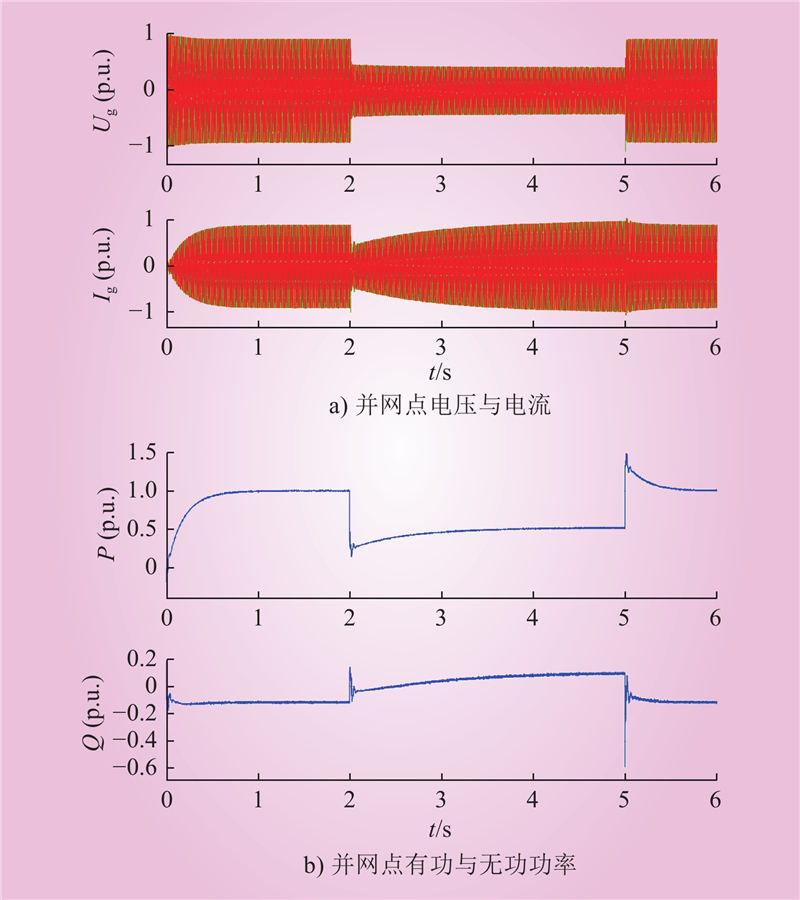| 1 |
陈胜, 卫志农, 顾伟, 等. 碳中和目标下的能源系统转型与变革: 多能流协同技术[J]. 电力自动化设备, 2021, 41 (9): 3- 12.
|
|
CHEN Sheng, WEI Zhinong, GU Wei, et al. Carbon neutral oriented transition and revolution of energy systems: multi-energy flow coordination technology[J]. Electric Power Automation Equipment, 2021, 41 (9): 3- 12.
|
| 2 |
文云峰, 杨伟峰, 汪荣华, 等. 构建100%可再生能源电力系统述评与展望[J]. 中国电机工程学报, 2020, 40 (6): 1843- 1856.
|
|
WEN Yunfeng, YANG Weifeng, WANG Ronghua, et al. Review and prospect of toward 100% renewable energy power systems[J]. Proceedings of the CSEE, 2020, 40 (6): 1843- 1856.
|
| 3 |
KIWAN S, AL-GHARIBEH E. Jordan toward a 100% renewable electricity system[J]. Renewable Energy, 2020, 147, 423- 436.
DOI
|
| 4 |
于琳, 孙华东, 徐式蕴, 等. 电力电子设备接入电压支撑强度量化评估指标综述[J]. 中国电机工程学报, 2022, 42 (2): 499- 515.
|
|
YU Lin, SUN Huadong, XU Shiyun, et al. Overview of strength quantification indexes of power system with power electronic equipment[J]. Proceedings of the CSEE, 2022, 42 (2): 499- 515.
|
| 5 |
文云峰, 杨伟峰, 林晓煌. 低惯量电力系统频率稳定分析与控制研究综述及展望[J]. 电力自动化设备, 2020, 40 (9): 211- 222.
|
|
WEN Yunfeng, YANG Weifeng, LIN Xiaohuang. Review and prospect of frequency stability analysis and control of low-inertia power systems[J]. Electric Power Automation Equipment, 2020, 40 (9): 211- 222.
|
| 6 |
TENG Y T, DENG W, PEI W, et al. Review on grid-forming converter control methods in high-proportion renewable energy power systems[J]. Global Energy Interconnection, 2022, 5 (3): 328- 342.
DOI
|
| 7 |
ZHANG H B, XIANG W, LIN W X, et al. Grid forming converters in renewable energy sources dominated power grid: control strategy, stability, application, and challenges[J]. Journal of Modern Power Systems and Clean Energy, 2021, 9 (6): 1239- 1256.
DOI
|
| 8 |
许诘翊, 刘威, 刘树, 等. 电力系统变流器构网控制技术的现状与发展趋势[J]. 电网技术, 2022, 46 (9): 3586- 3595.
|
|
XU Jieyi, LIU Wei, LIU Shu, et al. Current state and development trends of power system converter grid-forming control technology[J]. Power System Technology, 2022, 46 (9): 3586- 3595.
|
| 9 |
杨仁炘, 张琛, 蔡旭, 等. 海上风电–柔直并网系统自同步电压源控制与电网故障穿越[J]. 中国电机工程学报, 2022, 42 (13): 4823- 4835.
|
|
YANG Renxin, ZHANG Chen, CAI Xu, et al. Voltage source control and fault ride-through of VSC-HVDC systems with offshore wind farm integration[J]. Proceedings of the CSEE, 2022, 42 (13): 4823- 4835.
|
| 10 |
WANG J N, LI F X, CUI H T, et al. Impacts of VSG control on frequency response in power systems with high-penetration renewables[C]//2021 IEEE 5th Conference on Energy Internet and Energy System Integration (EI2). Taiyuan, China. IEEE, 2021: 171–176.
|
| 11 |
顾浩瀚, 蔡旭, 李征. 基于改进型电网电压前馈的光伏电站低电压穿越控制策略[J]. 电力自动化设备, 2017, 37 (7): 13- 19, 31.
|
|
GU Haohan, CAI Xu, LI Zheng. LVRT control strategy based on improved grid-voltage feed-forward for photovoltaic station[J]. Electric Power Automation Equipment, 2017, 37 (7): 13- 19, 31.
|
| 12 |
邢鹏翔, 贾璇悦, 许长清, 等. VSG低电压穿越的特性分析及控制方法研究[J]. 电网与清洁能源, 2022, 38 (8): 130- 137, 143.
|
|
XING Pengxiang, JIA Xuanyue, XU Changqing, et al. A study on characteristic analysis and control methods of low voltage ride through for the VSG[J]. Power System and Clean Energy, 2022, 38 (8): 130- 137, 143.
|
| 13 |
胡海林, 万晓凤, 丁小华, 等. 分布式虚拟同步发电机改进低电压穿越控制技术[J]. 电机与控制学报, 2020, 24 (1): 145- 155.
|
|
HU Hailin, WAN Xiaofeng, DING Xiaohua, et al. Improved low voltage ride-through control strategy for distributed virtual synchronous generator[J]. Electric Machines and Control, 2020, 24 (1): 145- 155.
|
| 14 |
刘航, 王跃, 刘永慧, 等. 基于定量设计虚拟阻抗的VSG低电压穿越策略[J]. 高电压技术, 2022, 48 (1): 245- 256.
|
|
LIU Hang, WANG Yue, LIU Yonghui, et al. The LVRT strategy for VSG based on the quantitatively designed virtual impedance[J]. High Voltage Engineering, 2022, 48 (1): 245- 256.
|
| 15 |
党克, 田勇, 刘子源, 等. 串联制动电阻提高VSG的LVRT能力和功角稳定研究[J]. 太阳能学报, 2022, 43 (1): 323- 328.
|
|
DANG Ke, TIAN Yong, LIU Ziyuan, et al. Study on improving lvrt capability and power angle stability of vsg by series braking resistor[J]. Acta Energiae Solaris Sinica, 2022, 43 (1): 323- 328.
|
| 16 |
王雪梅, 王艺博, 刘雨桐, 等. 基于虚拟电抗的主动支撑型新能源机组低电压穿越控制方法[J]. 电网技术, 2022, 46 (11): 4435- 4444.
|
|
WANG Xuemei, WANG Yibo, LIU Yutong, et al. Low voltage ride-through control of actively-supported new energy unit based on virtual reactance[J]. Power System Technology, 2022, 46 (11): 4435- 4444.
|
| 17 |
施凯, 叶海涵, 徐培凤, 等. 基于欠励磁状态运行的虚拟同步发电机低电压穿越控制策略[J]. 电力系统自动化, 2018, 42 (9): 134- 140.
|
|
SHI Kai, YE Haihan, XU Peifeng, et al. Under-excitation operation of low voltage ride-through control strategy for virtual synchronous generator[J]. Automation of Electric Power Systems, 2018, 42 (9): 134- 140.
|
| 18 |
董纪清, 潘佳清, 毛行奎. 自适应正负序复合控制的VSG低电压穿越策略[J]. 电网技术, 2023, 47 (2): 815- 822.
|
|
DONG Jiqing, PAN Jiaqing, MAO Xingkui. Low voltage ride-through strategy of VSG based on adaptive positive and negative sequence composite control[J]. Power System Technology, 2023, 47 (2): 815- 822.
|
| 19 |
陈天一, 陈来军, 郑天文, 等. 基于模式平滑切换的虚拟同步发电机低电压穿越控制方法[J]. 电网技术, 2016, 40 (7): 2134- 2140.
|
|
CHEN Tianyi, CHEN Laijun, ZHENG Tianwen, et al. LVRT control method of virtual synchronous generator based on mode smooth switching[J]. Power System Technology, 2016, 40 (7): 2134- 2140.
|
| 20 |
李华, 高怀正, 郝悦, 等. 基于虚拟同步发电机低电压穿越的无缝切换控制策略[J]. 太阳能学报, 2021, 42 (3): 114- 120.
|
|
LI Hua, GAO Huaizheng, HAO Yue, et al. Seamless switching control strategy for low voltage ride-through based on virtual synchronous generator[J]. Acta Energiae Solaris Sinica, 2021, 42 (3): 114- 120.
|
| 21 |
郑涛, 王子鸣, 邹芃蓥. 基于相位跳变补偿的虚拟同步发电机低电压穿越控制策略研究[J]. 电网技术, 2023, 47 (1): 100- 109.
|
|
ZHENG Tao, WANG Ziming, ZOU Pengying. Research on low voltage ride-through control strategy of virtual synchronous generator based on phase jump compensation[J]. Power System Technology, 2023, 47 (1): 100- 109.
|
| 22 |
高怀正, 李华, 常兴, 等. 电压跌落下虚拟同步发电机故障穿越控制[J]. 电力系统保护与控制, 2018, 46 (17): 39- 46.
|
|
GAO Huaizheng, LI Hua, CHANG Xing, et al. Fault ride-through of virtual synchronous generator under voltage drop[J]. Power System Protection and Control, 2018, 46 (17): 39- 46.
|
| 23 |
张宇, 蔡旭, 张琛, 等. 并网变换器的暂态同步稳定性研究综述[J]. 中国电机工程学报, 2021, 41 (5): 1687- 1702.
|
|
ZHANG Yu, CAI Xu, ZHANG Chen, et al. Transient synchronization stability analysis of voltage source converters: a review[J]. Proceedings of the CSEE, 2021, 41 (5): 1687- 1702.
|
| 24 |
裴金鑫, 姚骏, 黄森, 等. 电网短路故障下新能源并网变换器的暂态同步机制及其自适应稳定控制策略[J]. 中国电机工程学报, 2022, 42 (16): 5922- 5934, 6167.
|
|
PEI Jinxin, YAO Jun, HUANG Sen, et al. Transient synchronization mechanism and adaptive stability control strategy for renewable energy grid-connected converter under grid faults[J]. Proceedings of the CSEE, 2022, 42 (16): 5922- 5934, 6167.
|
| 25 |
盛四清, 田颢璟, 孙大卫, 等. 弱电网中直驱风机对称短路故障电流暂态特性[J]. 华北电力大学学报(自然科学版), 2022, 49 (5): 33- 41, 51.
|
|
SHENG Siqing, TIAN Haojing, SUN Dawei, et al. Transient characteristics of symmetrical short circuit fault current of direct drive fan in weak current network[J]. Journal of North China Electric Power University (Natural Science Edition), 2022, 49 (5): 33- 41, 51.
|
| 26 |
刘芳, 刘威, 徐韫钰, 等. 弱电网条件下并网逆变器控制环路稳定判据及交互作用规律分析[J]. 中国电机工程学报, 2023, 43 (2): 466- 482.
|
|
LIU Fang, LIU Wei, XU Yunyu, et al. Analysis on stability criterion and interaction law of grid-connected inverter control loop under weak grid condition[J]. Proceedings of the CSEE, 2023, 43 (2): 466- 482.
|
| 27 |
刘芳. LCL-VSR的控制与设计[D]. 合肥: 合肥工业大学, 2008.
|
|
LIU Fang. Control and design of LCL-VSR[D]. Hefei: Hefei University of Technology, 2008.
|
| 28 |
国家质量监督检验检疫总局, 中国国家标准化管理委员会. 光伏发电站接入电力系统技术规定: GB/T 19964—2012[S]. 北京: 中国标准出版社, 2013.
|



